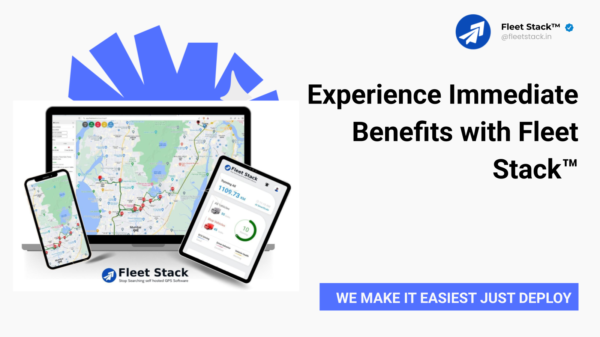Embarking on the journey of modern work can feel like navigating a maze of challenges.
Finding the right tools is crucial in a world where efficiency is the currency. Are you grappling with the mismanagement of tasks, struggling to keep your team synchronized, or overwhelmed by the myriad of office management software options? Do not worry.
In this blog, we’ll explore the answers to mastering contemporary work with six essential office management software solutions tailored to elevate your success.
1. Project Management Software
These tools transcend mere task tracking, offering a comprehensive suite of features to keep your projects on track and your team in sync. Imagine a platform where you can visualize project timelines, easily assign tasks, and monitor progress seamlessly. That’s the power of modern project management software.
One standout in this world is tools that facilitate agile methodologies, allowing for iterative and adaptive project management. These systems enable teams to respond swiftly to changing requirements, ensuring flexibility in the face of evolving project dynamics. Collaboration is key, and project management solution acts as the digital facilitator, fostering communication and cohesion among team members, irrespective of their physical locations.
These tools often integrate with other essential software, creating a unified ecosystem for your office management needs. From Gantt charts for visualizing timelines to collaborative spaces for brainstorming, project management solutions become the center of your project’s success.
2. Customer Relationship Management (CRM) Software
Beyond being a database for contact information, CRM software is a dynamic hub. It empowers businesses to understand and cater to their customers’ needs effectively. These tools excel at organizing and analyzing customer data, providing valuable insights that can inform strategic decisions.
Personalization is key, and CRM software enables businesses to deliver a more tailored and responsive customer experience. It becomes particularly vital in an era where customer expectations are evolving rapidly.
According to Forbes, selecting the best CRM software requires careful consideration. Start by assessing your needs, objectives, and necessary characteristics. Define your total CRM budget and ensure it aligns with per-user pricing. Set clear objectives for the company and fix any shortcomings in marketing, sales, or customer support.
Prioritize essential features like email marketing, sales analytics, automation, forecasting, and integrations. In addition, task management, lead/customer segmentation, online forms, complaint tickets, communication tools, and management for marketing campaigns should also be included.
These tools can also integrate with various communication channels and marketing platforms, creating a centralized hub for managing customer interactions. CRM software streamlines the entire customer journey from lead generation to post-purchase support.
Incorporating it into your arsenal is not just a strategic move; it’s a commitment to building lasting and fruitful relationships with your customers.
3. Visitor Management Software
In the ever-evolving landscape of modern work, where physical and digital spaces seamlessly intersect, the importance of visitor management cannot be overstated. Efficiently welcoming and tracking visitors is not just a logistical challenge but a security and compliance necessity. This is where visitor management software comes into play, offering a digital solution to streamline the visitor registration process and enhance overall office security.
According to Greetly, this software provides a user-friendly interface for guests to register their arrival, often replacing traditional logbooks. Beyond the convenience, it adds an extra layer of security by allowing organizations to monitor and control visitor access systematically. Such software can be customized to match the specific requirements, creating a professional and seamless first impression for your guests.
The versatility of visitor management software extends beyond simply recording guest details. It can be configured to notify hosts of visitor arrivals, track visitor frequency, and even capture visitor photos for added security. Integrating such software becomes a strategic step toward creating a secure, organized, and welcoming environment for all stakeholders.
4. Financial Management Software
Imagine a platform where you can effortlessly manage budgets, track expenses, and generate detailed financial reports. That’s the power of modern financial management software.
Beyond basic accounting functions, these tools often integrate with banking systems and offer robust invoicing capabilities, facilitating seamless financial transactions. They aid in compliance and ensuring adherence to regulatory standards.
According to Analytics Insight, financial software offers numerous benefits to the financial sector by streamlining operations and enhancing efficiency. It facilitates the creation of effective reports by collecting and classifying information, supporting various accounting processes, and integrating with other business areas. These solutions simplify processes through business intelligence systems, recording and analyzing data while automating calculations.
The software contributes to cost savings by optimizing time and minimizing financial risks, providing precise control over the company’s capital. It enables comprehensive financial reporting, empowering businesses to conduct in-depth analyses. It can diagnose current situations and set achievable, measurable goals for short-, medium-, and long-term success.
5. Communication and Collaboration Tools
Communication and collaboration tools redefine the way teams interact, fostering seamless connectivity irrespective of geographical distances. Picture a digital workspace where team members can effortlessly share ideas, collaborate on projects in real time, and communicate efficiently; that’s its transformative impact.
These solutions often integrate instant messaging, video conferencing, and document-sharing features, creating a virtual hub where ideas can flow freely. Beyond traditional email, they facilitate agile communication, ensuring quick responses and reducing bottlenecks. Collaboration is not confined to physical spaces anymore; it transcends borders and time zones, enabling teams to work together seamlessly.
These tools often integrate with project management and file storage systems. They provide a unified platform for streamlined workflows. Incorporating these tools into their repertoire is not just about technology adoption. It’s a strategic move towards fostering a culture of innovation, connectivity, and productivity. It ensures that teams can collaborate harmoniously in the pursuit of shared goals.
6. Document Management Software
This software transcends traditional file storage, offering a comprehensive suite of features to manage documents seamlessly. According to PMWorld 360 Magazine, easy document categorization and retrieval represents one of the key benefits of document management. Employees can save valuable time and enhance productivity by avoiding lengthy searches for essential information.
Document Management System (DMS) provides a secure means of storing and retrieving documents, preventing the risk of misplacement or theft. Sensitive data may be kept private by using DMS to password-secure documents and limit access to only authorized individuals.
Document management facilitates collaboration and teamwork, offering an additional advantage. DMS simplifies collaboration and communication for multiple individuals by allowing simultaneous access to and editing of documents. This might be especially helpful for companies where teams collaborate on projects.
Version control, another feature of DMS, can assist in avoiding errors and misunderstandings that might arise from having different document versions in circulation.
In conclusion, mastering modern work is about harnessing the power of specialized tools that align with the intricate demands of today’s dynamic workplaces. Embracing these tools isn’t just a technological upgrade; it’s a strategic move toward efficiency, security, and innovation.
As you navigate the complexities of contemporary work, let these software solutions be your allies. These can help in crafting a workplace to thrive in the ever-evolving landscape of the professional world.





























































